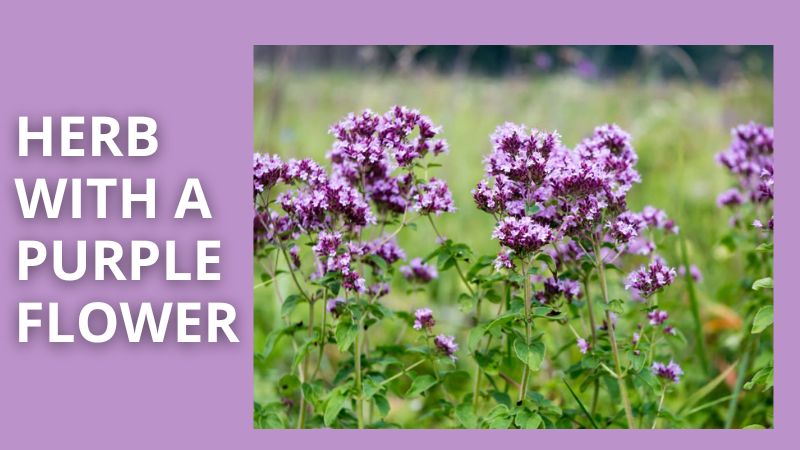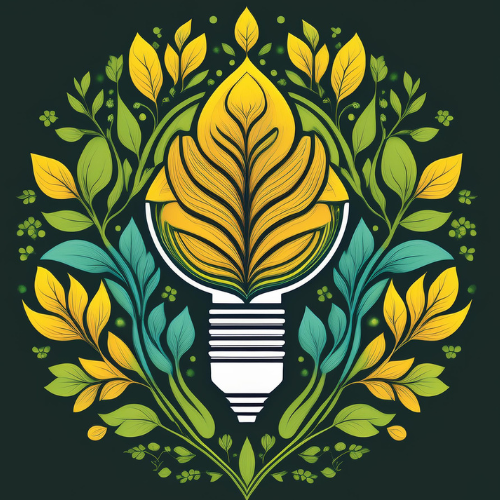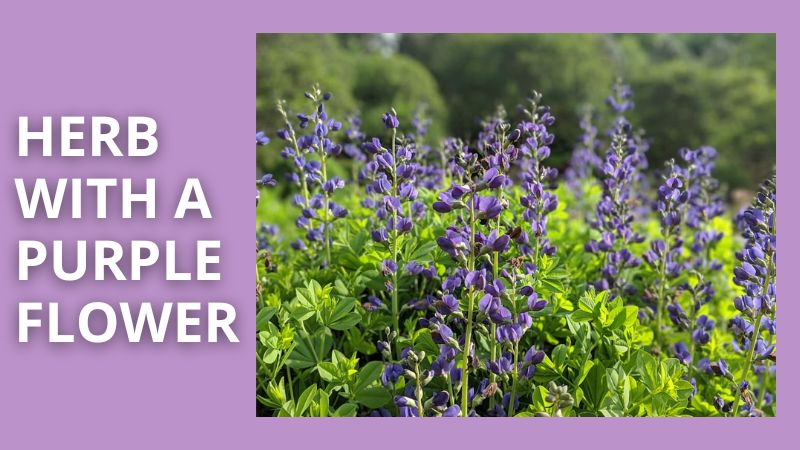OTHER IDEAS
17 Herb With A Purple Flowers
Purple flowers are a beautiful addition to any garden, bringing a sense of elegance and tranquility. When these flowers are part of herbs, they offer not only aesthetic value but also culinary, medicinal, and aromatic benefits. Here’s, Floral Garden Ideas will share detailed information about 17 herb with a purple flower that can beautify your garden and your life.
17 Herb with a Purple Flowers
Lavender (Lavandula)
Lavender, celebrated for its soothing fragrance, features spiky purple flowers cherished in gardens and used for making essential oils, sachets, and culinary treats. This sun-loving herb flourishes in well-drained soil.
Sage (Salvia officinalis)
Sage produces beautiful purple-blue flowers on tall spikes. This herb is widely used in cooking, especially in Mediterranean cuisine. Sage prefers sunny locations and well-drained soil, making it a hardy addition to any herb garden.
Thyme (Thymus vulgaris)
Thyme, a low-lying herb adorned with delicate purple flowers, is a culinary staple used in countless dishes. Its drought-tolerant nature and fragrant foliage make it an ideal ground cover, adding both beauty and flavor to your garden.
Oregano (Origanum vulgare)
Oregano boasts clusters of small purple flowers and is a staple in Italian and Greek cooking. It thrives in full sun and well-drained soil, often attracting bees and butterflies to the garden.
Rosemary (Rosmarinus officinalis)
Rosemary features needle-like leaves and small, light purple flowers. It’s a hardy, evergreen herb often used in cooking and for its aromatic properties. Rosemary prefers a sunny location with well-drained soil.
Chives (Allium schoenoprasum)
Chives have globular, purple flower heads that add a pop of color to herb gardens. They are commonly used as a garnish in culinary dishes. Chives are easy to grow and prefer full sun to partial shade.
Basil (Ocimum basilicum ‘Purple Ruffles’)
Purple Basil is a striking variety of basil with deep purple leaves and flowers. It’s not only beautiful but also adds a unique flavor to dishes. Purple basil thrives in warm, sunny spots with rich, well-drained soil.
Anise Hyssop (Agastache foeniculum)
Anise Hyssop’s towering spikes of purple flowers are a magnet for pollinators. With its licorice-like taste, this herb is a versatile ingredient in teas and culinary creations. Thriving in full sun and well-drained soil, Anise Hyssop is a delightful addition to any garden.
Catmint (Nepeta)
Catmint, with its captivating lavender-blue flower spikes, is a hardy perennial adored by both humans and felines. This versatile herb, prized for its calming properties, finds its way into teas and relaxation remedies. Catmint thrives in sunny locations with well-drained soil.
Purple Sage (Salvia officinalis ‘Purpurascens’)
Purple Sage is a variety of common sage with purplish leaves and flowers. It’s used similarly in cooking and adds visual interest to the garden. Purple sage prefers sunny spots and well-drained soil.
Lemon Balm (Melissa officinalis)
Lemon Balm occasionally produces small, purple-tinted flowers. It has a mild lemon scent and is used in teas and for its calming properties. Lemon balm grows well in full sun to partial shade and prefers moist, well-drained soil.
Borage (Borago officinalis)
Borage boasts striking, star-shaped, purplish-blue flowers and is prized for its cucumber-flavored leaves. The edible blooms add a touch of beauty and flavor to culinary creations.
Russian Sage (Perovskia atriplicifolia)
Russian Sage boasts tall, airy spires adorned with delicate lavender-blue flowers. A hardy plant thriving in full sun and well-drained soil, it’s a popular choice for xeriscaping due to its exceptional drought tolerance.
Vervain (Verbena officinalis)
Vervain has small, delicate purple flowers and is often used in herbal medicine. It’s known for its relaxing properties and is used in teas and tinctures. Vervain prefers full sun to partial shade and well-drained soil.
Purple Loosestrife (Lythrum salicaria)
Purple Loosestrife boasts striking, tall spikes of bright purple flowers. However, its beauty can be deceptive. This plant is considered invasive in many areas and can harm local ecosystems. If you choose to grow it, exercise extreme caution and be aware of local regulations. Purple Loosestrife thrives in moist soil and full sun.
Betony (Stachys officinalis)
Betony has spikes of purple flowers and is used in traditional herbal medicine. It’s known for its calming properties and is often used in teas. Betony prefers full sun to partial shade and well-drained soil.
Hyssop (Hyssopus officinalis)
Hyssop produces spikes of blue-purple flowers and has a strong, aromatic scent. It’s used in culinary dishes and herbal medicine. Hyssop grows well in full sun and well-drained soil, making it a resilient choice for herb gardens.

Growing and Caring for Purple Flowering Herbs
When cultivating herbs with purple flowers, consider the following tips for success:
- Sunlight: Most purple-flowered herbs prefer full sun, which encourages robust growth and vibrant blooms.
- Soil: Well-drained soil is crucial for plant health. Proper drainage prevents harmful root rot. Incorporating organic matter like compost improves soil structure, allowing excess water to escape while retaining essential nutrients.
- Watering: While many of these herbs are drought-tolerant once established, regular watering is necessary during their initial growth period. Avoid overwatering, as this can lead to fungal diseases.
- Pruning: Regular pruning encourages fuller, bushier growth and promotes more abundant flowering. Removing spent blooms, a process known as deadheading, can extend the blooming season and keep your plants looking their best.
- Companion Planting: Many of these herbs can benefit from being planted alongside other herbs and vegetables, as they can help deter pests and attract beneficial insects.
Benefits of Purple Flowering Herbs
Incorporating purple-flowering herbs into your garden offers numerous benefits:
- Aesthetic Appeal: The vibrant purple flowers add beauty and elegance to any garden setting.
- Culinary Uses: Many of these herbs are versatile in the kitchen, enhancing the flavor of various dishes.
- Medicinal Properties: Numerous purple-flowering herbs have traditional uses in herbal medicine, offering potential health benefits.
- Pollinator Attraction: The flowers attract bees, butterflies, and other pollinators, which are crucial for a healthy garden ecosystem.
- Fragrance: The aromatic qualities of these herbs can enhance the sensory experience of your garden.
Conclusion
Herbs with purple flowers provide a delightful combination of beauty, utility, and ecological benefits. Whether you are looking to enhance your garden’s visual appeal, experiment with new culinary flavors, or explore the medicinal properties of these plants, there are numerous options to choose from. By understanding the growing needs and characteristics of these 17 herbs, you can create a vibrant and thriving garden space filled with the elegance of purple blooms.


